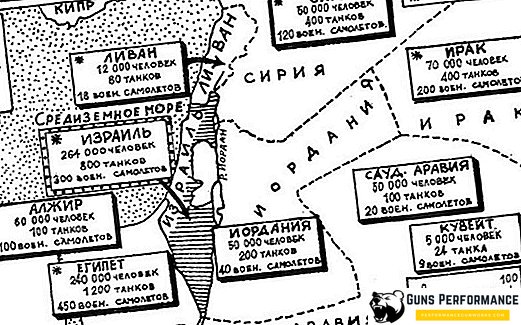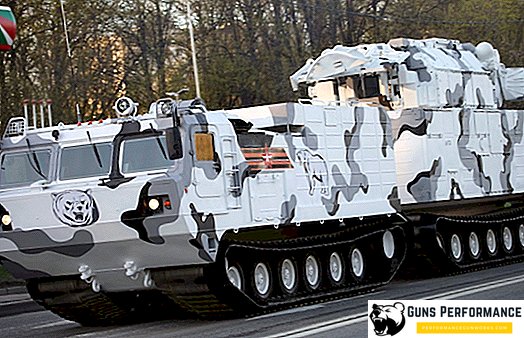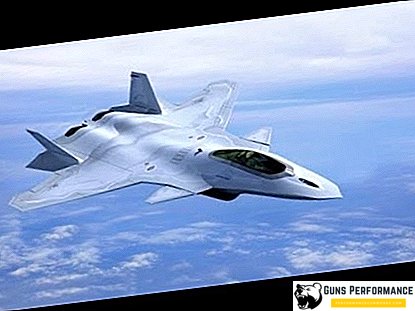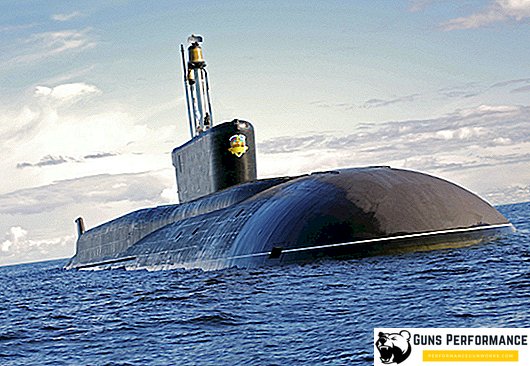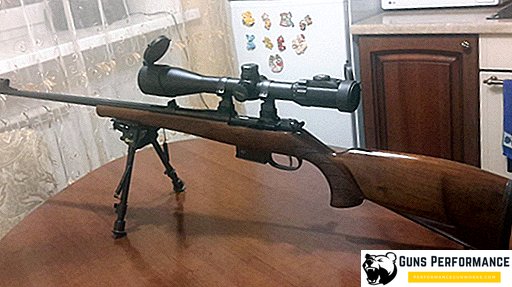The Iroquois UH-1 is a midsize multi-role military helicopter developed by the US manufacturer Bell Helicopter for the US military. It was the first turbocharged helicopter used by the US military. Its development began in 1955.

There are many variants of this helicopter, among which there are three separate groups: models with one engine and a short cabin, models with one engine and a long cabin and models with two engines; These modifications were sold by Bell Helicopter for civilian use under the designations Bell 204, Bell 205 and Bell 212, respectively.
This helicopter was first used for military purposes in 1959. Its mass production began in 1962. The helicopter is designated UH-1 with the official name Iroquois (Iroquois), but is more commonly known as Huey ("Huey"). He is considered to be almost the most successful helicopter in the world. Over the entire history has been released more than 16,000 units. "Huey" is known for its participation in the Vietnam War, in which about 7,000 units of this combat vehicle were used. The helicopter was widely exported and continues to serve in many of the armed forces of the world, including the United States Marine Corps. Huey's most modern version is the Bell UH-1Y Venom.
Development history
The first helicopters of this type were equipped with piston engines. However, in the early 1950s, aircraft designers decided to use turbine powerplants in helicopters, which were previously installed on aircraft. Turbines were better because, although they were more expensive to manufacture, they had a long service life and were extremely small for their high power compared to reciprocating engines.
Prototypes XH-40 and YH-40
The first American helicopter to use a turbine engine was the modified Bell Model 47, designated XH-13F, which made its first flight in October 1954. Immediately assessing this model, the US Army immediately (in 1955) signed a contract with Bell Helicopter to develop a new powerful helicopter with a turbine engine. The prototype of the new helicopter received the designation XH-40, or Model 240. The first XH-40 took off on October 22, 1956, and in 1957 two more prototypes were built.
In 1958, 6 experimental YH-40 helicopters were tested (further development of the XH-40).

After successful tests in 1962, the helicopter was commissioned and mass production was launched.
Modifications
Bell 204:
- The UH-1A is the first production version with the Lycoming T53 L-1 engine. The helicopter was originally called HU-1A, hence the unofficial nickname Huey;
- TH-1A - training modification;
- XH-1A - test version, equipped with a grenade launcher;
- UH-1B - version with turbine T53-L-5 960 WPS. The rotor was increased to 13 m in diameter, and the rotor blades to 53 cm in width. The cabin is increased to seven people;
- UH-1C - version with a turbine with a capacity of 820 kW (1100 W / s) T53-L-9 or L-11, blades Bell 540 69 cm wide, and also with an elongated tail for treated maneuverability. The volume of the fuel tank has been increased, and additional hydraulic double control has been introduced (to increase bullet resistance);
- The UH-1M is equipped with a Lycoming T53 L-13 turbine with a power of 1,000 kW (1,400 hp);
- UH-1E is a naval version of the UH-1B / C made of aluminum (for corrosion protection). Many of these modifications later received the turbine Lycoming T53 L-13 with a power of 1,000 kW (1,400 hp).
Bell 205:
- The YUH-1D is a prototype with an expanded capacity for 13 passengers or 6 stretchers. The prototype was equipped with a turbine T53 L-9 and first took off in August 1960;
- UH-1D - production version of the YUH-1D with the engine Lycoming T53 L-11;
- HH-1D - converted UH-1D with a fire extinguishing tank with a volume of 190 liters;
- EH-1H - modification for electronic warfare;
- HH-1N - modification designed for fire fighting;
- HH-1K - SAR version of the UH-1E for the US Navy with updated avionics and turbine Lycoming T53 L-13;
- UH-1L - UH-1C version for the US Navy with Lycoming T53 L-13 turbine;
- JUH-1 SOTAS modification, equipped with radar AN / APS-94;
- TH-1L - UH-1L training version for the Navy;
- VH-1N - VIP class modification for transportation of high-ranking officials;
- UH-1P - Armored UH-1F for the US Air Force, designed for the psychological war in Vietnam.
Bell 212:
- The Twin-Huey UH-1N is based on the twin-engine Bell 212. Equipped with two Pratt & Whitney Canada PT6T-3 / T400 turbocharged turbochargers, 1342 kW (1800 W / s).
Bell 412:
- UH-1Y "Venom" - also called Super Huey. An upgraded version of the UH-1N based on Bell 412 with improved avionics, the Glass Cab technology, two General Electric T700 GE 401C turbines with a capacity of 1150 kW (1546 WPS) and a four-bladed rotor.
Vietnam War
Because of its wide range of features, the Huey has become a symbol of the Vietnam War. During the entire conflict, the UH-1 helicopter flew 9,713,762 hours.
In the Vietnam War, three main Huey configurations were used:
- Slick: transportation of troops or cargo. Armament: M60 on each side of the fuselage;
- Gunship: ground support or support. Armament (depending on time, tasks and versions): two 7.62x51 mm machine guns connected in parallel on each side of the fuselage; a grenade launcher mounted under the nose of the aircraft, and two 70-mm triple rocket launchers;
- Medevac: sanitary evacuation.
In total, during the war, the enemy was destroyed or 3,305 UH-1 helicopters of all types were accidentally lost.

The first airborne victory of the helicopter occurred on January 12, 1968, when the crew of the UH-1D fired two An-2 airplanes belonging to the Vietnamese People’s Air Force. Aircraft were destroyed.
Specifications (UH-1H)
General characteristics:
- Crew: 1-4;
- Capacity: 3880 pounds (1760 kg), including 14 soldiers or 6 stretchers, or equivalent cargo;
- Length: 57 feet 1 inch (17.40 m) with rotors;
- Width: 8 feet 7 inches (2.62 m) (fuselage);
- Height: 14 feet 5 inches (4.39 m);
- Diameter of main rotor: 48 feet (14.63 m);
- Empty weight: 5215 pounds (2365 kg);
- Gross weight: 9.040 pounds (4,100 kg);
- Maximum take-off weight: 9,500 pounds (4,309 kg);
- Powerplant: 1 × Lycoming T53-L-11 turbine engine, 1100 hp (820 kW).
Performance:
- Maximum speed: 135 miles per hour (217 km / h; 117 kN);
- Cruising speed: 125 miles per hour (201 km / h; 109 kN);
- Action radius: 315 miles (274 miles per hour; 507 km);
- Operating ceiling: 19,390 feet (5,910 m), depending on load, air temperature, etc .;
- Climbing speed: 1755 ft / min (8.92 m / s);
- Power / Weight: 0.15 HP / lb (0.25 kW / kg).
Armament:
- 7.62 mm machine guns;
- Rocket capsules 2.75 inches (70 mm).


